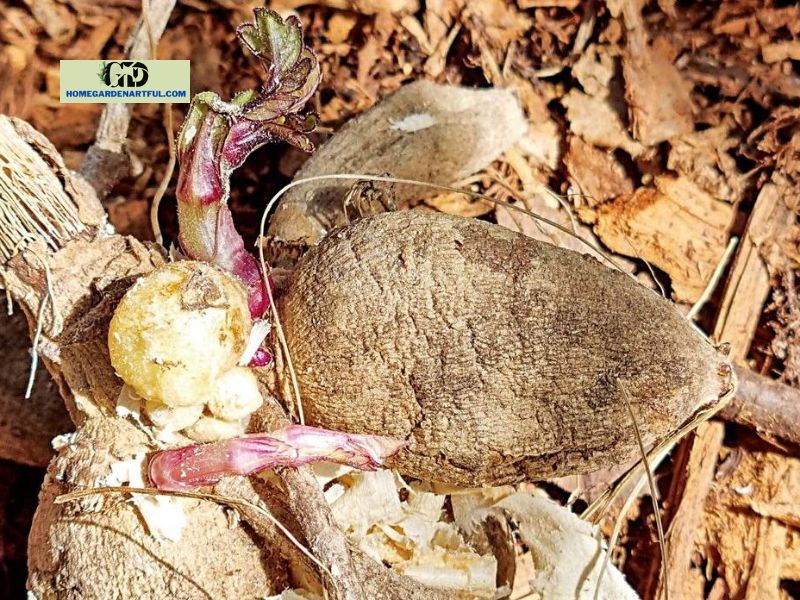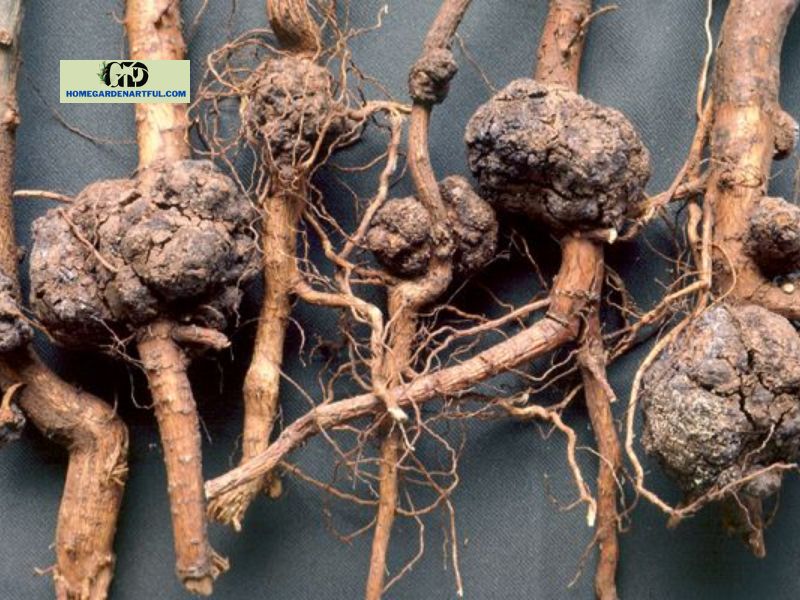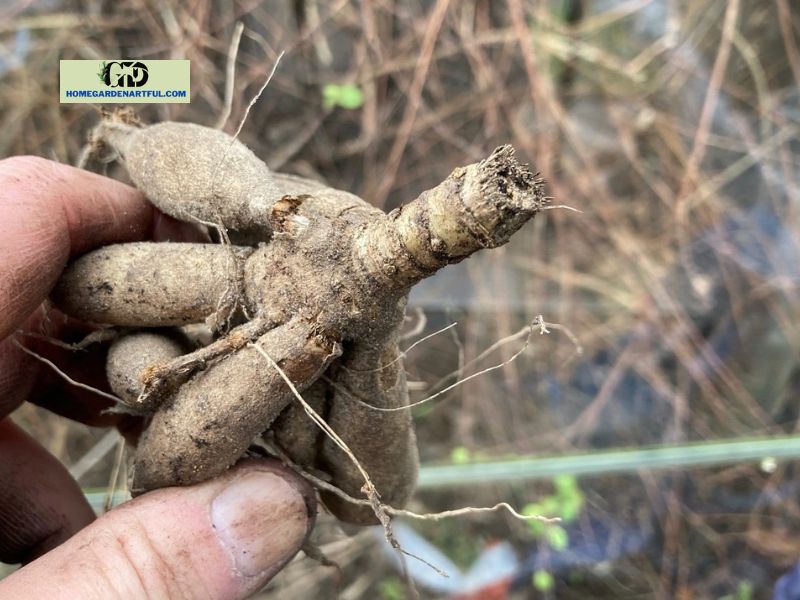Are you getting into trouble with Dahlia Crown Gall? Dahlia Gall disease is a bacterial infection that damages Dahlia plant stems and roots. Crown gall and leafy gall are the two kinds of gall that infect dahlias.
Crown gall is a disease caused by the bacterium Rhizobium radiobacter in dahlia tubers. The bacterium Rhodococcus fascians causes leafy gall. In both cases, bacteria enter the plant via wounds in the roots or stems and induce plant tissues to develop in an unorganized or deformed manner. Discover at homegardenartful.com!
Dahlia leafy gall
Leafy gall disrupts normal hormone function in infected plants by affecting their genetic makeup. It appears in dahlias as thick clusters of deformed, leafy shoots or buds, commonly at the plant’s stem base.
Because of the placement of the distorted shoots, leafy gall might be difficult to detect while the dahlia is growing in your garden beds.
Most of these are stunted and only grow an inch or two. Some shoots may lengthen, but they will never reach the size of uninfected shoots.
Other plants that can develop leafy galls include wall flowers, strawberries, nicotiana, and pelargoniums.
Dahlia Crown Gall

Cells multiply in the tuber and other tissues affected by the crown gall bacterium in Dahlia crown gall disease. Swollen lumps and protuberances appear on the dahlia tubers, roots, or stems as a result of this. These galls are typically spherical and have a rough surface. This is how you can tell them apart from typical tubers, which have smooth surfaces.
Galls on Dahlia plant stems rot and dissolve quickly, whereas those on tubers are more likely to endure.
Many other plants are affected by crown gall, including Begonia, Lupins, Phlox, and Sweet Peas.
What is the distinction between Dahlia Crown Gall and Dahlia leafy gall?
Bacteria induce both crown gall and foliage gall, but they damage different regions of the dahlia plant. Crown gall generates knobbly swellings or galls on the plant’s stems and roots, whereas leafy gall causes plant tissues to grow disorganizedly, resulting in dense clusters of deformed, green shoots.
What effect does dahlia gall have on dahlias?

As previously stated, the symptoms of dahlia gall differ according to the type of gall and the degree of the illness. Many dahlia cultivars can be damaged, while some are less prone to gall. Among the most common symptoms are:
- Crown galls are swellings or galls on plant stems or roots.
- Leafy shoots or groups of twisted leaves (leafy gall)
- Crown galls are abnormal growths or bulges on the roots.
- Plant growth and vigor (both) are reduced.
- Flowers that have been stunted or deformed (both are unusual)
Dahlia gall causes
The bacteria that cause the two forms of dahlia gall can be found in contaminated soil or on contaminated plant material such as tubers or cuttings. They can potentially enter the factory via contaminated tools or equipment.
They typically penetrate the plant via wounds or natural holes like stomata or lenticels. Once inside the plant, they cause plant cells to divide and develop abnormally, resulting in the creation of galls or leafy shoots.
Does dahlia gall interfere with flowering?

Dahlia gall can interfere with flowering by limiting plant growth and vitality and resulting in stunted or deformed flowers. However, severe influence on blooming is uncommon, and not all infected plants will exhibit symptoms, and most will continue to produce healthy flowers despite the presence of galls.
Managing and preventing dahlia gall
There is no cure for leaf gall or crown gall. In other words, once a plant is contaminated, there is nothing you can do to cure it.
As a result, the emphasis must be on preventing dahlia gall infection before it starts.
You might attempt the following methods to avoid and manage dahlia gall:
- Avoiding root and stem damage: When planting dahlias, take care not to harm the roots or stems, because this can create entrance routes for bacteria.
- Planting Dahlia tubers in well-draining soil: Dahlia tubers should be planted in well-drained soil since excess moisture might produce an environment suitable for bacterial growth. Bacteria will infiltrate the plant if there are lesions in the tubers or if the tubers decay due to moist weather.
- Getting rid of affected plants: Any plants that show evidence of dahlia gall should be removed right away to prevent the illness from spreading. Diseased plant materials should not be composted.
- Disinfect tools and equipment: Don’t take cuttings from contaminated plants and use disinfected knives between plants.
- Water plants at the roots: Water promotes bacterial infection, therefore water your dahlias carefully and avoid leaving the foliage wet for long periods of time.
- Purchase disease-free tubers: Avoid buying dahlia tubers that may be contaminated with bacteria. Instead, get tubers from reputed nurseries or farmers who have been disease-tested.
Conclusion
Although Dahlia Crown Gall is uncommon, it can be harmful to dahlias in the garden. In many circumstances, you will see little impact on your flowers, however, it is preferable to avoid the disease from accumulating and spreading through appropriate cleanliness methods, as stated above.


